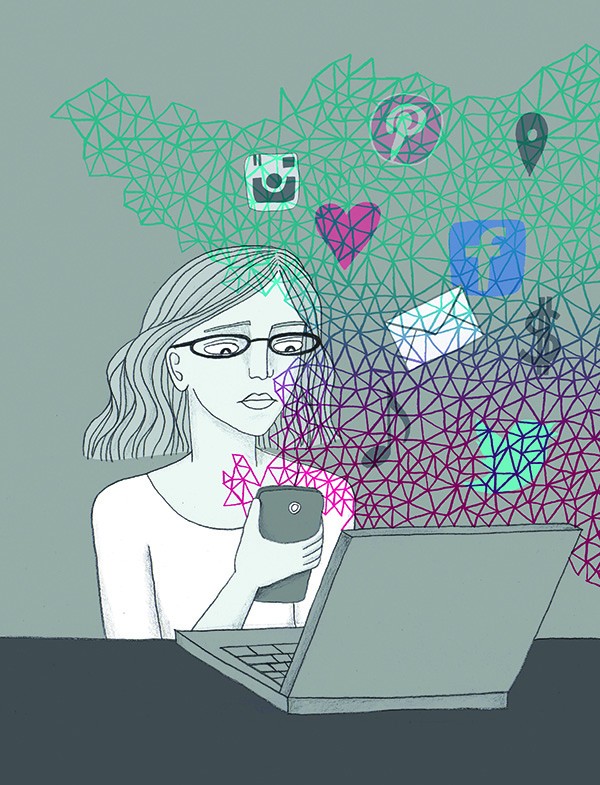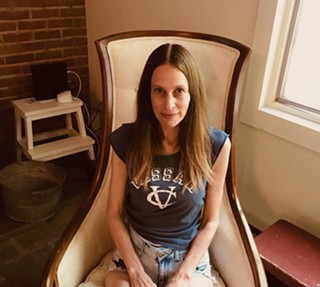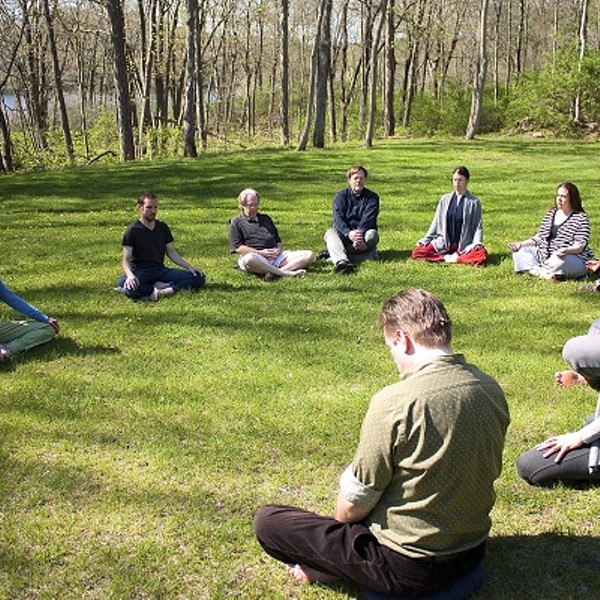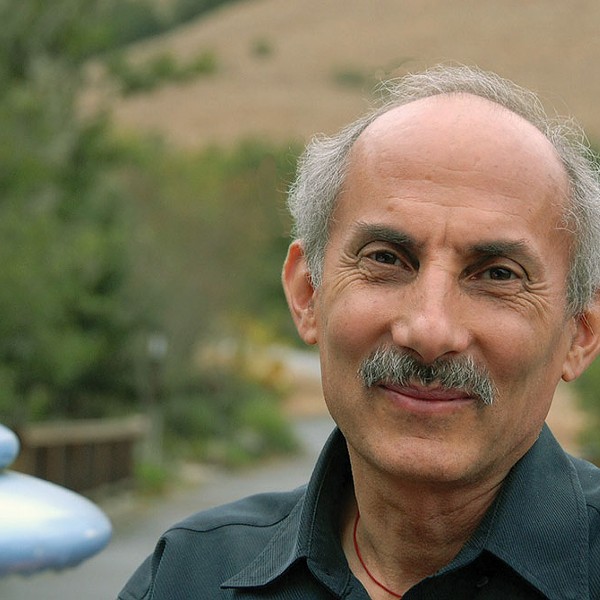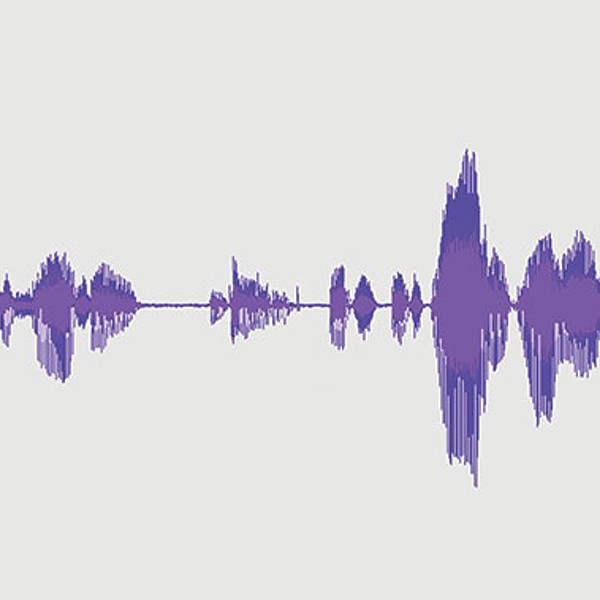For Kelley Amadei, every year begins with silence. Just after New Year's, when a deep chill has settled in, she checks into The Garrison Institute for a nine-day silent meditation retreat with the American Buddhist teacher Lama Surya Das, and wraps herself in a warm duvet of quietude and stillness. Asked to honor a code of Noble Silence when the retreat begins, Amadei joins a hushed group of 20 to 50 people who have sworn off cell phones, devices, media, books, and everyday chitchat for the gathering's duration. Together yet alone in a veil of reticence, they walk the corridors of the sprawling former monastery, smell its dark wood and incense, eat in the dining hall, stroll the grounds on the Hudson riverfront, listen to the lama's teachings, and sit for meditation. It's an experience that stands in stark contrast to her digitally connected life—as an executive coach to high-powered business people, Amadei is always online—and that's exactly what she likes about it. "I think it started out as a search for better self-awareness," says Amadei, who lives with her wife and son in Garrison, not far from the Institute (it was Lama Surya Das who led her to the area). Over 15 years she has built up her practice from a half day of silence on her own to a yearly nine-day retreat. "I get to connect with myself in a way that feels more authentic."
Introducing the Digital Detox
Silence as a spiritual practice comes cloaked in a rich history; nearly all religions weave some aspect of quiet contemplation into their tapestry of rituals. Carthusian and Benedictine monks pass in and out of great islands of silence. In the Quaker meeting tradition, silence is the mystic heart: People may speak out of it, yet no vocalization is frivolous. Secular life has rarely prized silence, but in today's Age of Distraction—where social interactions preclude physical presence via an array of devices from mobiles to tablets—silence is more exotic than ever, and perhaps more necessary.
"We are pretty constantly always in touch with someone else these days," says Sharon Salzberg, an internationally known meditation teacher who leads three or four silent retreats a year at places like The Garrison Institute and the Insight Meditation Society, which she cofounded, in Barre, Massachusetts. Salzberg references the modern malady of "continuous partial attention," a phrase coined by the writer Linda Stone to describe the cognitive condition that arises from connecting through the digital realm. We don't want to miss anything, yet we're not fully present either. It's a constant state of high alert that feeds into feelings of stress and overwhelm, compromising our ability to think clearly and be creative and effective. "You're on e-mail and you think, what about Facebook? You're texting and you think, what about Twitter? It's too much," says Salzberg, who notes that a silent retreat can act as a digital detox and a counterbalance to all that virtual movement. "It's such a bold and wonderful experiment not to engage in our normal social chatter. It's a tremendous gift to give to oneself."
Finding Wisdom in Stillness
Amadei doesn't have to travel far to reach The Garrison Institute, but as she approaches, a shift in consciousness begins. "It's really beautiful to see the enormous shadow of the monastery as you're driving up the private road. When you step inside, there's this feeling of Noble Silence even before it begins, a seriousness or deliberateness." After checking in and leaving her cell phone with a staff member, she finds her room before the group meets in the meditation hall. "The senior teachers and retreat managers come in to welcome us, lay out the ground rules, and tell us what to expect," says Amadei. Even though retreatants are instructed to be silent with one another, they listen to teachings at prescribed times, and they can talk to a staff member whenever they have questions or concerns. "The staff tries to set us at ease that this is an intense and beautiful experience, that it's going to be uncomfortable at times and that's okay." Amadei likes this sort of honesty—because the silence is not always easy for her. Sometimes inner demons claw through. "There's always this anticipation of what's going to come up for me in the silence. Where's my mind going to go? What deep, dark, uncomfortable thing am I going to uncover this time? Am I going to be willing to face it?"







